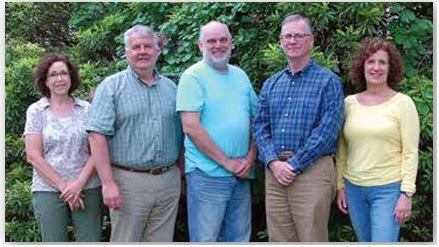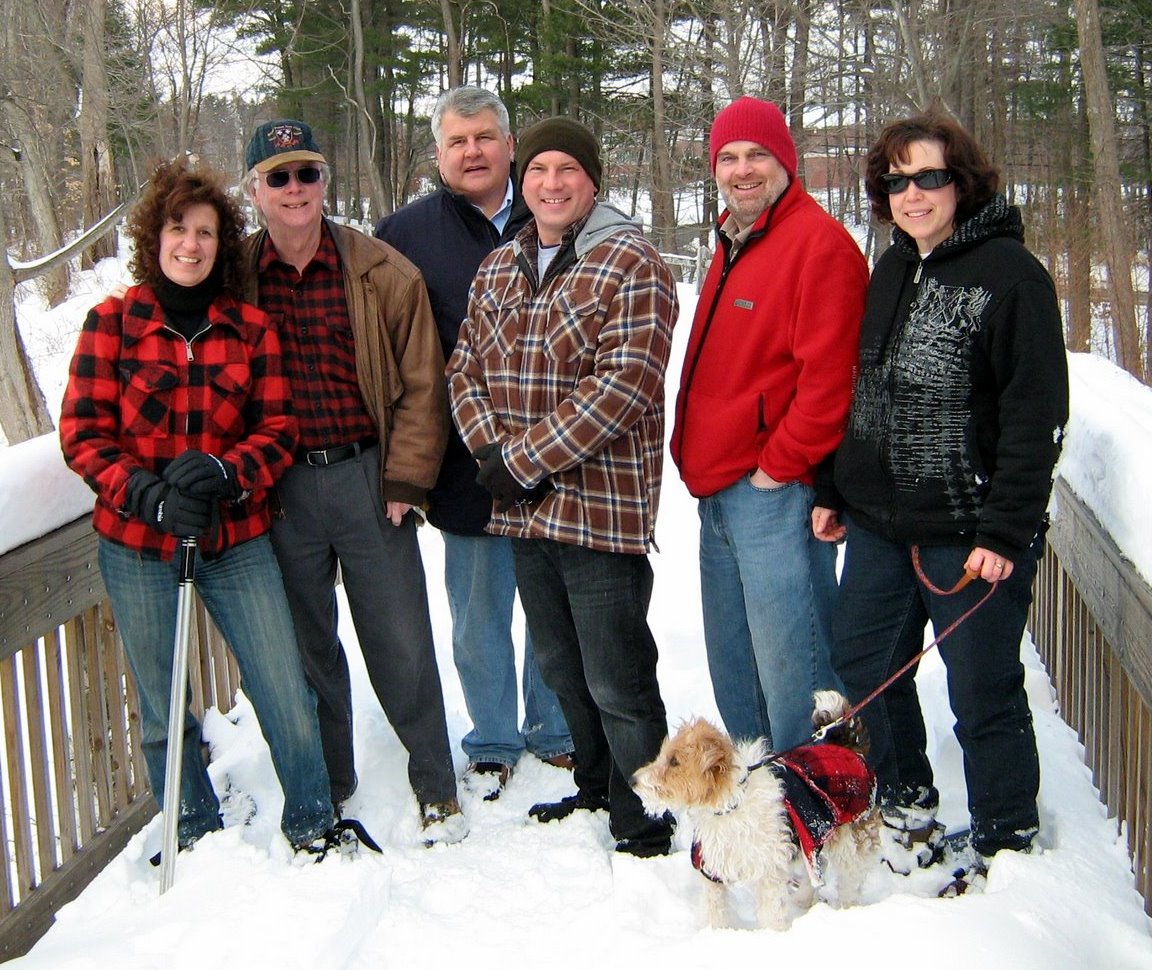There has been an article in the CtPost regarding the Conservation Commission's request to the Planning & Zoning Commission for release of moneys from a trust account they are custodians for and was funded during the subdivision process of property known as Huntington Woods. Kate Ramunni has done a good job of presenting the story. As is my custom, I cut/paste the article with additional information to help the public understand the subject more than can be explained within the confines of the newspaper.
First: the original CtPost's story's URL will become stale after a certain period of time, and then be available only via a pay/article type service.
http://www.connpost.com/localnews/ci_9915924
The CtPost article is below, with my additional comments bounded by ++ marks:
KATE RAMUNNI
Article Last Updated: 07/17/2008 10:38:12 PM EDT
SHELTON — A trust fund set up years ago by a developer may be used for a major project that will help improve and expand the city's Recreation Path.
In 2000, developer Monty Blakeman put $60,000 into the trust fund when his Huntington Woods 72-lot subdivision won Planning and Zoning Commission approval.
++ The trust account was required as part of the subdivision approval given by the Planning and Zoning Commission, and was funded via the subdivision applicant "Huntington Woods LLC", which is owned by Monty Blakeman. Commonly, developers form a legal entity (usually an Limited Liability Corporation) for each development. Mr Blakeman has performed with great success as both a developer (creator of subdivisions) and a builder (constructs residential and commercial structures) via various entities.++
The money was to be used to fund "other on-site and off-site improvements," according to Zoning Administrator Rick Schultz.
++ The subdivision regulations require that 10% of the raw land parcel's acreage be set aside as Public Open Space. In this development application's approval by the PZC, in addition to that land set-aside, and recognizing that there may be improvements needed once the development became built (it was done in 2 phases), the PZC required that $60k be set in trust for such improvements. Though not stated clearly in the minutes, it was generally understood that this would be for use in constructing the Recreation Path which would traverse the Open Space dedication as the general discussions on the subject during the approval process started with the developer constructing the RecPath with his equipment while preparing the site, then diminished to offering use of his equipment to do the construction, and finally dwindled to the money being set into trust for future improvements.++
Since then, the money has sat in the fund unused. But now the Conservation Commission is asking the P&Z for permission to use the money to partially fund a $150,000 project that would make the path accessible to the handicapped and to bicycle riders.
"We have been trying for many years to create a recreation path from Huntington Center to downtown Shelton, and we have made pretty good progress," said Conservation Commission Vice Chairman Bill Dyer, who also chairs the Trails Committee.
++ The RecPath is currently routed to run from Pine Lake near downtown, to Huntington Center. The highest intensity of use is expected near the school campus, police station, and senior center as it wraps around former public water reservoirs (now owned by the City, and no longer used for water supply). We concentrated on those areas, constructing timber bridges, preparing connections to trails for the SHS Cross Country Team, etc. Additionally, work has taken place on the Huntington end of the path with work by the Shelton Land Trust (a non-govt not for profit) which has facilitated the path through it's meadow off of Lane Street. There has been lots of progress.++
The work they want to do now would make the path between 8- and 12-feet wide and cover it with gravel that would allow for easier access for those on bicycles and in wheelchairs, he said.
The commission already has gone out to bid for the work, which came in at the $150,000 figure and would be done in three phases, Dyer said.
++ The RecPath is more than a hiking trail, it is designed to be a multi-use (walking, biking, etc) pathway. The design was completed for Phase 1 (Pine Lake, across Meadow Street, thru the School Campus, across ConstBlvd, on top of the dam, to the corner by Rte108 and ConstBlvd.), permitting was obtained from the Inland Wetlands Commission, co-ordination occurred via the Mayor's office, the Request for Quotations went out via the Purchasing Dept., bids were reviewed by the Conservation Commission and recomendation made to the Mayor's office. We are not yet on Phase 2 (Knell's Rock/Rte108 to Huntington Woods) but some work has taken place in the Phase 3 area (Huntington Woods to Huntington Center) in the area of Lane Street and privately by the Shelton Land Conservation Trust on their land off Lane Street where they have allowed the RecPath to traverse.++
Officials are looking into using Local Capital Improvement Program funds or other grant sources for the remaining $90,000, he said. When Dyer and chairman Thomas Harbinson met with Mayor Mark A. Lauretti about the project, it was Lauretti who suggested using the Huntington Woods Trust Fund to pay for part of the project, Dyer said. "He challenged us to come before you and ask for the money," he told the Planning and Zoning Commission this week. "We also will be looking for money from multiple pots."
++ LOCIP is a reimbursement program from the State of Ct. The project has to qualify for reimbursement (I confirmed that the RecPath does qualify via the Community Development Director who administrates the LOCIP program) and be within the limits of available funds (Shelton is allocated a threshold for LOCIP projects, and unused portions can be rolled over into a subsequent year - this is within the annual limits). The City should have a Capital Improvement Plan where it projects what projects and how much they cost will need to be undertaken, and where the money will come from. It does not seem to be a formally documented process, and thus the look for multiple funding sources++
The work won't be done near the Huntington Woods subdivision in the area of Bridgeport Avenue and Old Stratford Road, which led zoning commission Chairman Tony Pagoda to question whether the money could be used for that purpose. "I was under the impression that the money had to be used around Huntington Woods for the benefit of the people living there," he said. "Don't get me wrong — I think this is great, but I just want to make sure that the funds are used as they were intended to be used." There's been much volunteer time and effort invested in that area by the Conservation Commission and the Trails Committee, both Dyer and Harbinson said. "We have done a lot of work around there," Dyer said.
++ The timber bridge at Huntington Center, the preparation of the Lane Street as a RecPath location near the Scenic Lane Estates subdivision, the work co-ordinated with the Shelton Land Conservation Trust for a boardwalk construction across a stream near Lane Street, the work by the Land Trust via a grant from the Iroquois Gas company for the work on the Hawley Meadow parcel, Eagle Scout projects by Spencer Tate for timber bridge projects near Huntington Woods: ALL work in/near Huntington Woods.++
"Overall, this project benefits the residents of Huntington Woods and the entire community," Harbinson said.
++ Shelton is a community as a whole. I have at times encountered people who want to distinguish themselves as living in Huntington or White Hills, and that's fine for people looking to portray a certain cache, but to think that their is some greater ownership or entitlement to a trail or open space is a misunderstanding. There is certainly greater benefit and value to having a trail network within walking distance of your residence, but the project benefits the entire community and is offered to the entire community with full inclusion.++
Zoning Commissioner Patrick Lapera, who also is an attorney, said that the commission needs to be especially careful since the money was put into a trust. There must be a clear designation in the document that will allow it to be used for the recreation path, he said, adding that he would support it only if there is a guarantee that the rest of the project will be funded. "I would not be in favor of giving out this money unless you have in hand the other money," he said.
++ It will be up to the P&Z Administrator to research the trust document and consult with the City's Atty over available course of action. Unless we have complete funding, there is no Phase1 construction. The Conservation Commission has been carrying the baton on this leg of approvals and logistics planning, but ultimately the Board of Alderman as the governmental body in control of financial matters will have to make the decision in awarding and funding this capital project++
Friday, July 18, 2008
Subscribe to:
Posts (Atom)


